I am really excited to introduce this new material, Preserving Our Environment Charts! The work is accessible to any child from age 5 and up. Environmental studies should be part of children’s daily lives from the time they can understand basic concepts such as living/non-living organisms. They can also learn through modeling donating unused objects, repurposing containers, visiting yard sales, recycling, or composting at home!
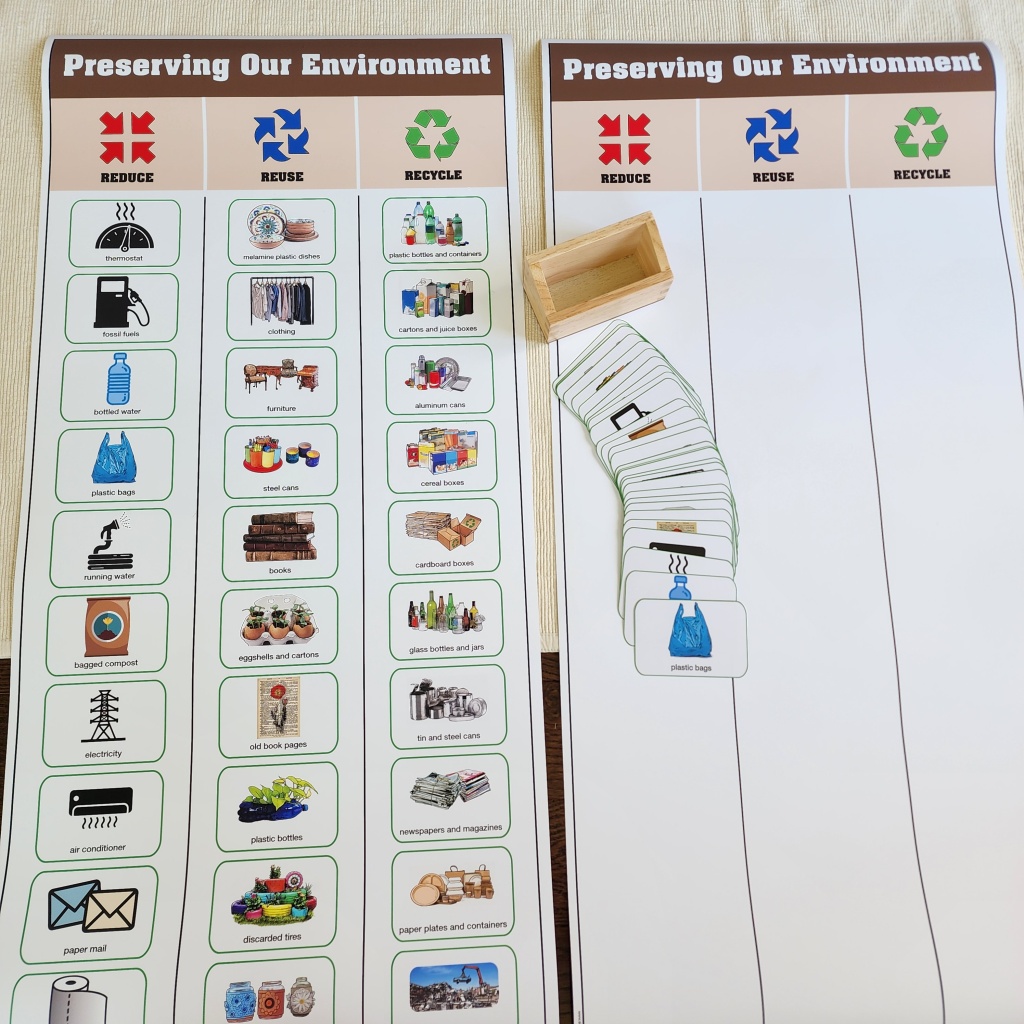

Preserving Our Environment Charts consists of an informed chart, a mute chart, and picture cards. In this post, we will review the use of classification work, such as charts, and ways to encourage children to deepen their knowledge through follow-up activities.
Materials:
What are Informed and Mute Charts?


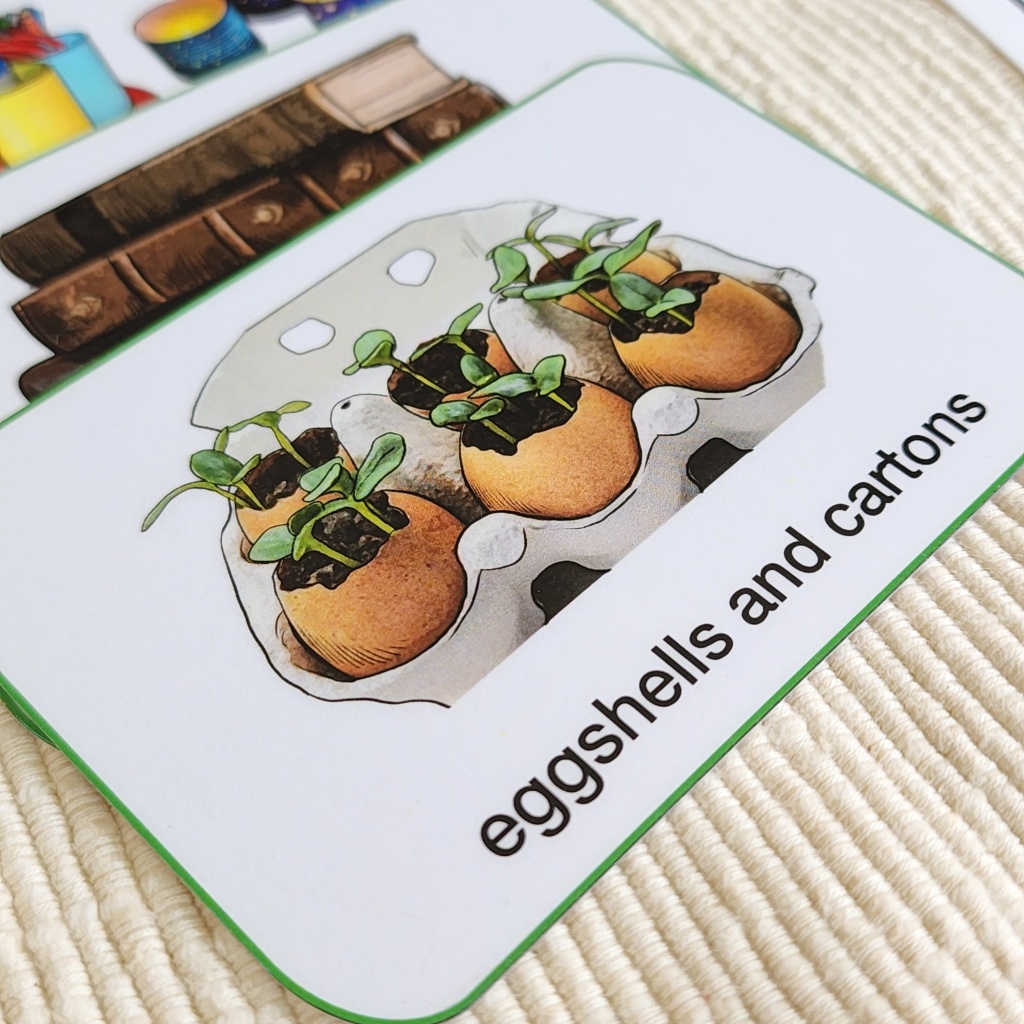
An informed chart is a chart that contains information, such as pictures, labels, or descriptions, that helps the children to understand a particular concept. The information is already present on the chart, designed to give the child a clear understanding of what is being presented. For example, our chart Preserving Our Environment displays three ways to preserve the environment: reduce, reuse, and recycle, illustrated by pictures and labels.
On the other hand, the mute chart has been intentionally left incomplete or without information. The purpose of the mute chart is to encourage the child to analyze and think critically about the information presented. The child is prompted to think about what is missing and determine what information needs to be added to complete the chart using picture cards.
Using both informed and mute charts engages learners in active learning and critical thinking. The informed chart helps to introduce the concepts “reduce, reuse, recycle” and gives children a foundational understanding of the topic, while the mute chart encourages them to think deeper and analyze the information presented.
Follow-up Activities
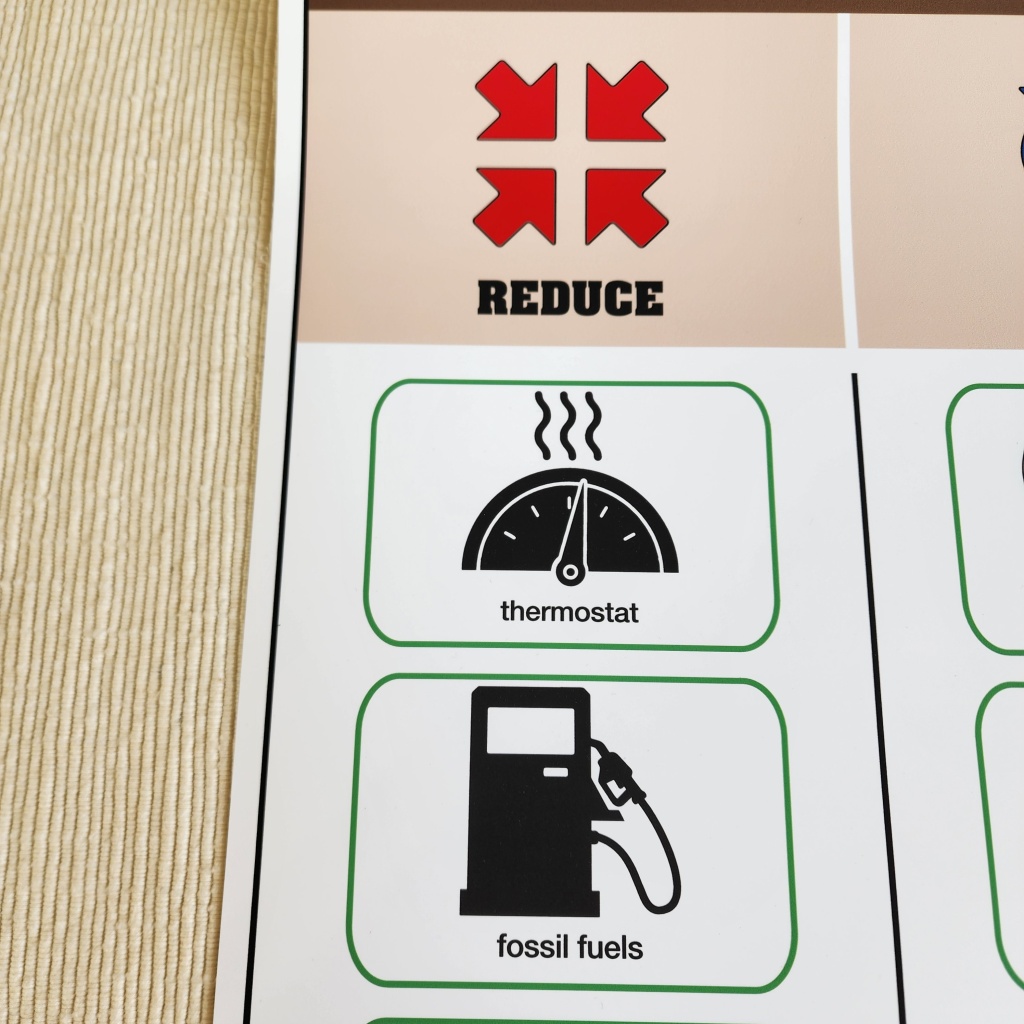
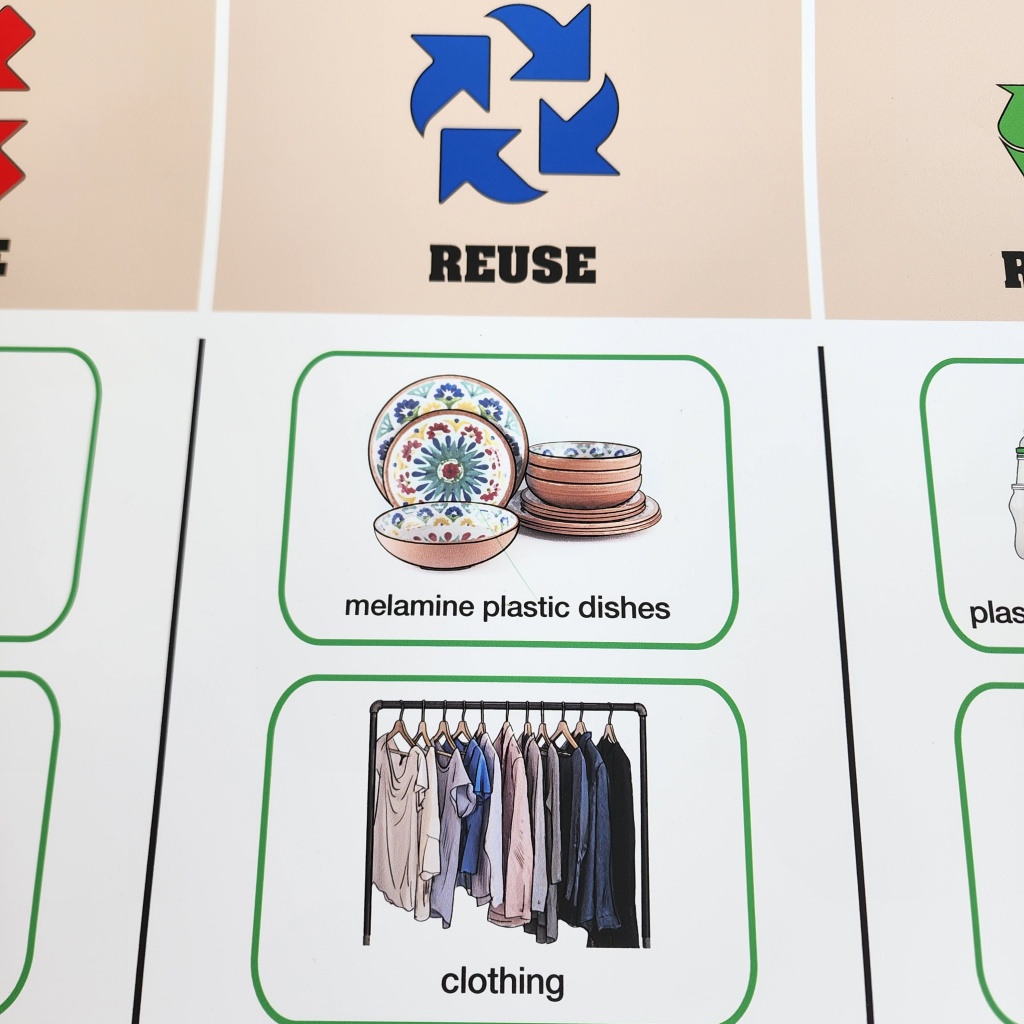
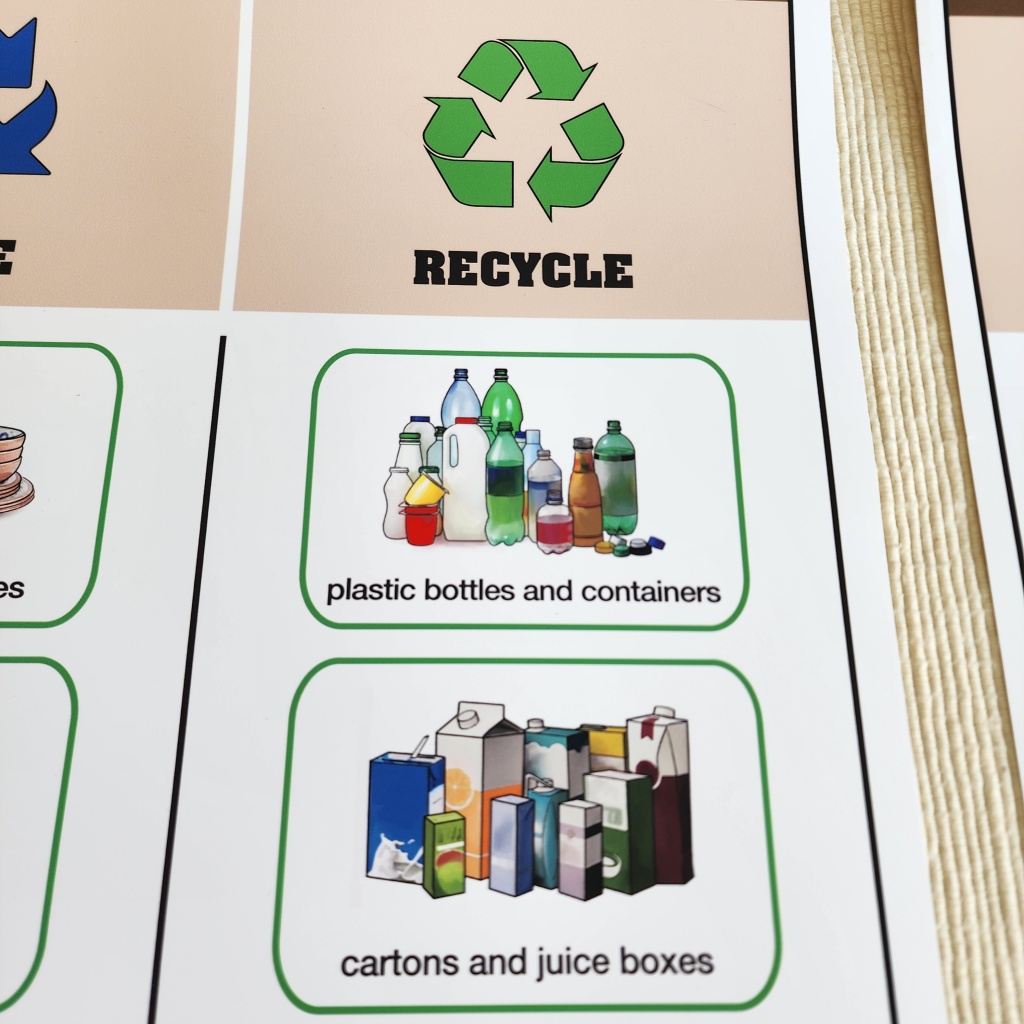
After introducing the material “Preserving Our Environment” to your learners, you may want to suggest some projects that can serve as a follow-up to reinforce their understanding and encourage practical application.
• Conduct a classroom or school-wide waste survey where students can assess the amount of waste generated and categorize it based on compost, recyclable, and non-recyclable materials. From there, they can determine how much of their waste can be reduced, reused, or recycled.
• Encourage children to participate in art projects that use recycled materials. For example, using plastic bottles to make flower pots or decorating tin cans as pencil holders.
• Set up a composting container in the classroom where students can learn how food waste can be reduced by turning it into nutrient-rich soil.
• Encourage children to bring their own reusable water bottles to school instead of using single-use plastic bottles. They can also make homemade reusable beeswax wraps to replace plastic wraps during snack time.
• Organize a field trip to a local recycling center where children can see the process of waste management in action. They can learn about how different materials are sorted and processed for recycling.
In conclusion, Preserving Our Environment Charts, will give your learners a good start on sustainable ecological habits. This should inspire them to seek more information and take action in their daily lives, making them responsible and proactive citizens!
Ready for a lesson? Check out my next post! Subscribe below:
These look wonderful! It’s more important now than ever to make sure our children know the importance of taking care of our earth
LikeLike